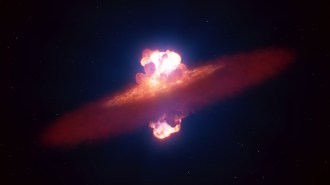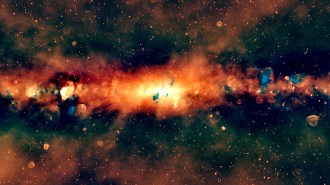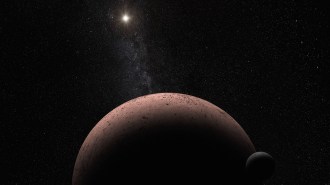
Planetary Science
Listen to the crackle of Martian ‘mini-lightning’
A microphone on NASA’s Perseverance rover recorded the sounds of electrical discharges generated by dusty gusts.
By Nikk Ogasa
Every print subscription comes with full digital access

A microphone on NASA’s Perseverance rover recorded the sounds of electrical discharges generated by dusty gusts.
We summarize the week's scientific breakthroughs every Thursday.

Some of the earliest images ever taken in the wake of massive star’s death give astronomers important clues about what triggers a supernova.

Planetary scientist Adeene Denton runs computer simulations to investigate Pluto, the moons of Saturn and other icy bodies in the solar system.

Supernova remnants, stellar nurseries and more populate the new edge-on view of the Milky Way as seen from Earth’s southern hemisphere.

Tests on olivine hint that water-rich exoplanets could generate H2O internally, possibly explaining ocean worlds and even some of Earth’s early water.

Theoretical physicist Alex Lupsasca is pushing for a space telescope to glimpse the thin ring of light that is thought to surround every black hole.
The growth spurt hints that the free-floating object evolves like a star, providing clues about rogue planets’ mysterious origins.
The map, spanning 4,000 light-years from the sun in all directions, combines a chart of space dust with the effects of a rare type of young, hot star.

The methane gas may constitute a rarefied atmosphere, or it may come from erupting plumes on Makemake’s surface.
Event Horizon Telescope data reveal the magnetic field around M87* shifted, weakened and then flipped, defying theoretical expectations.
Subscribers, enter your e-mail address for full access to the Science News archives and digital editions.
Not a subscriber?
Become one now.